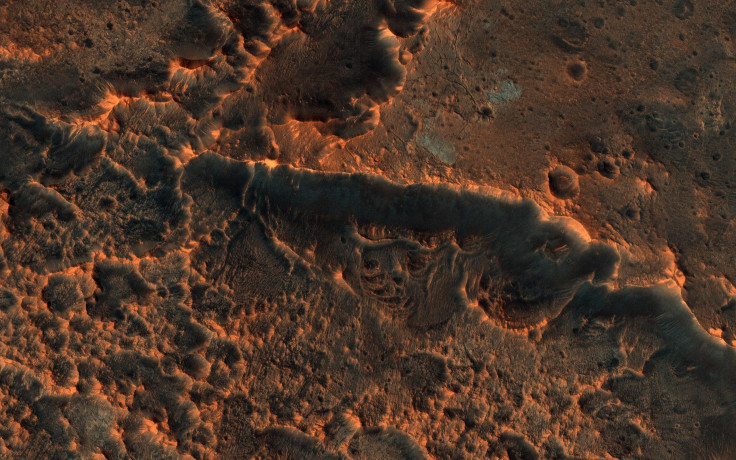Aliens On Mars News: Martian Meteorite On Earth Proves Aliens Exist?
Chunks of meteorites that fell on Earth from Planet Mars back in 1911 and landed on Egypt are now being closely studied by a group of scientists who believe they contain evidence of organic lifeform that once thrived on the Red Planet.
The Martian meteorites were said to have been caused by asteroid collisions that happened millions of years ag. They are believed to have found their way to Earth and are called nakhlites. Scientists from the University of Glasgow believe that these rocks could prove that Planet Mars had running water below the surface that was teeming with life.
Using a technique that analyzed the meteorites found on Earth, planetary scientists who conducted the study claimed that they were able to determine the process which generated water on Planet Mars.
"There's a huge amount of information about Mars locked inside the little pieces of the red planet which have fallen to Earth as meteorites. What we've seen is that the pattern of deformation in the minerals matches exactly the distribution of weathering veins that formed from the Martian fluids,” University of Glasgow’s School of Geographical and Earth Sciences Research Associate Dr. Luke Daly said in a paper titled "Boom boom pow: shock-facilitated aqueous alteration and evidence for two shock events in the Martian nakhlite meteorites" published in Science Advances.
The meteorite pieces proved that Planet Mars was hit by two asteroids that caused the space rocks to loosen and travel around space. The first meteorite hit 633 million years ago while the second one hit around 11 million years ago.
The Glasgow scientist shared that the first impact caused some major geological changes on Mars’ volcanic rock surface.
“This impact was big enough and hot enough to melt the ice under the Martian surface and send it rushing through newly-formed cracks in the rock. It effectively formed a temporary hydrothermal system below the surface of Mars, which altered the composition of the minerals in the rocks, close to these cracks. It suggests an asteroid impact was the mystery mechanism for generating liquid water in the nakhlites long after the volcano that formed them on Mars had become extinct,” Daly said.
The scientist then explained that the second meteorite was significant because it basically angled and provided just the right force to cause Martian debris containing clues of life to travel to Earth. Daly’s team believes that their study could provide some clues as to how the Red Planet’s landscape was formed.
Per the study, regular meteorite crashes basically disrupted Planet Mars’ icy surface and may have created complex hydrothermal systems throughout the Red Planet and form major sources of water.
“We're currently trying to understand Martian geology through these meteorites without knowing what part of Mars' surface these so-called nakhlites came from. Our new findings tightly constrain the possible origins of the nakhlites. We now know that we're looking for a complex volcanic edifice, about 1.3-1.4 billion years old, with one crater around 633 million years old and another one about 11 million years old. Very few places on Mars could fit that bill,” the scientist said.
The team’s finding is backed by NASA’s earlier discovery of evidence of water on Mars. Its Curiosity Rover was able to spot chemical and mineral signs of the planet’s past livable environment, prompting the space agency to declare back in 2015 that they have evidence of water on Mars.

© Copyright IBTimes 2024. All rights reserved.











